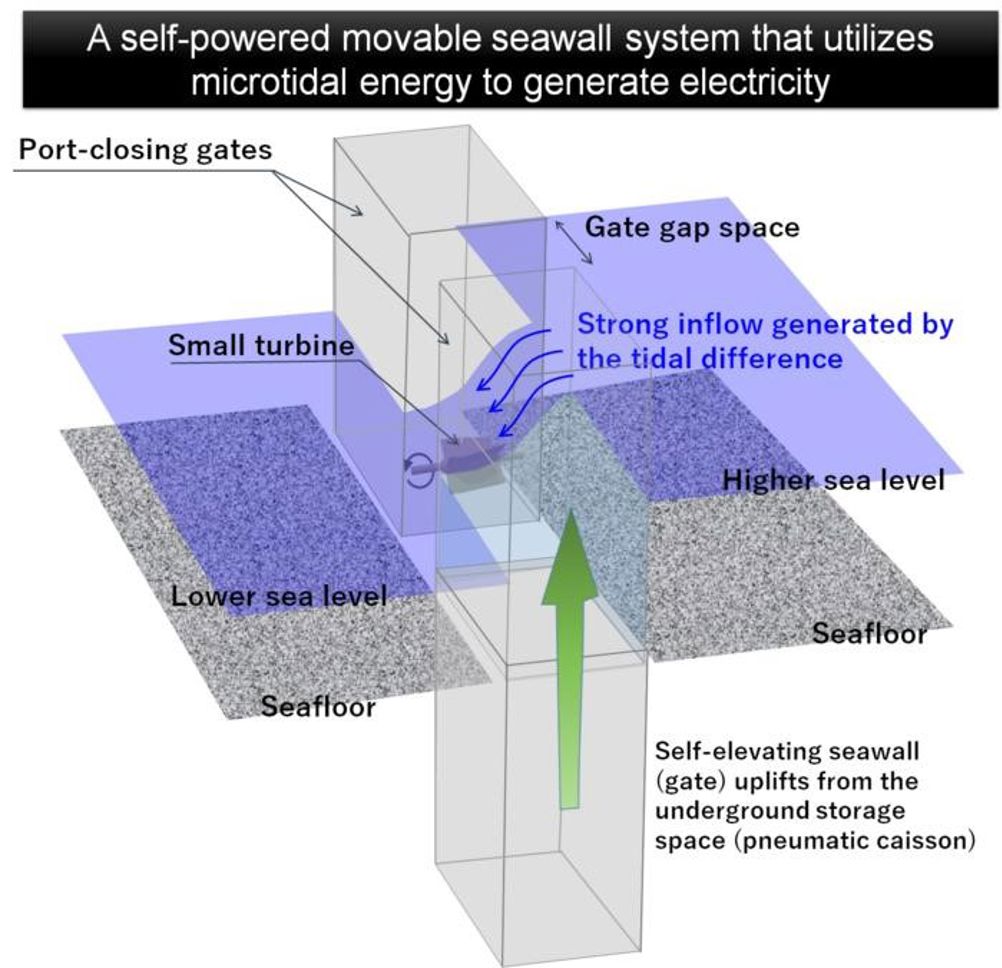Japan, with over 2,780 fishing ports and 993 commercial and industrial ports, faces the challenge of safeguarding these coastal assets from tsunamis.
Researchers said that a solution lies in the form of a movable barrier system, where gates rising from the seafloor act as barriers protecting ports against tsunamis, storm surges and high waves. However, during natural disasters, power outages may disrupt the electricity needed to operate the gate.
The proposed system consists of gates placed at the port entrance designed to close during periods of port inactivity. When raised, the differences in water levels between the inside and outside of the port are used to generate electricity, which then can be stored and utilised for subsequent gate operations.
In a statement, Professor Takagi said: “To our knowledge, there is no system in the world yet that uses movable seawalls to generate electricity and then uses that electricity to operate the system itself. In this sense, SMS is a completely new concept.”
According to the researchers, despite Japan’s extensive coastline, the tidal ranges are considered too small for large-scale tidal power generation. In contrast, the SMS system harnesses microtidal amplitudes in the sea level, which ranges from 10 – 150cm during spring tides.

The system features a series of gates with a 30cm gap that aims to operate the adjacent gates without interaction and small turbines for power generation housed within the gap. Turbines, with one propeller per 50cm interval vertically, are placed in the gaps between the gates.
The researchers tested the system's feasibility in Japanese ports, where it operated for eight hours a day, to determine if it could generate enough electricity to restore the gates under the seafloor after the tsunami alert was lifted, considering a buoyant force of floating gate.
Out of 56 assessed ports across Japan, the researchers found nine locations to be ‘highly feasible’, 14 ‘feasible’, and 33 ‘unfeasible’ due to small potential of energy generation.
However, 20 ‘feasible’ locations were identified along Japan’s western coast, facing the Nankai Trough – a subduction zone known as the source of megathrust earthquakes that occur every century or two. These seismic events have the potential to trigger tsunamis, making the proposed SMS system a promising protective measure for vulnerable ports and their hinterlands.
The team also identified specific ports, including Himeji and Fukuyama, as examples of favourable locations for generating surplus energy which can be stored for later use.
These areas, located in the Seto Inland Sea, serve as major industrial hubs with steel industries, shipbuilding, chemical plants, and various factories. Apart from protecting these critical infrastructures against tsunamis, the researchers said the system could also provide emergency power to enhance the resilience of these industries in the face of disasters.
While acknowledging challenges such as technical hurdles and restrictions by related laws and regulations, the researchers envision the SMS system as a global safeguard for ports against natural disasters, rising sea levels, and extreme weather, including coastal floods.#
The research, published in Renewable Energy, can be accessed in full here.











Guest blog: exploring opportunities for hydrogen combustion engines
"We wouldn't need to pillage the environment for the rare metals for batteries, magnets, or catalisers". Batteries don't use rare...